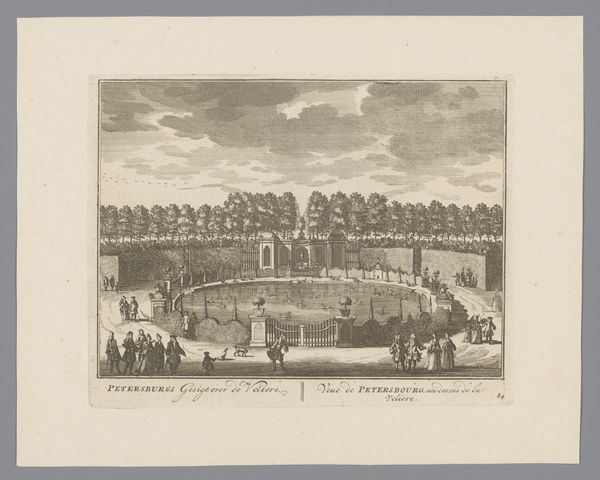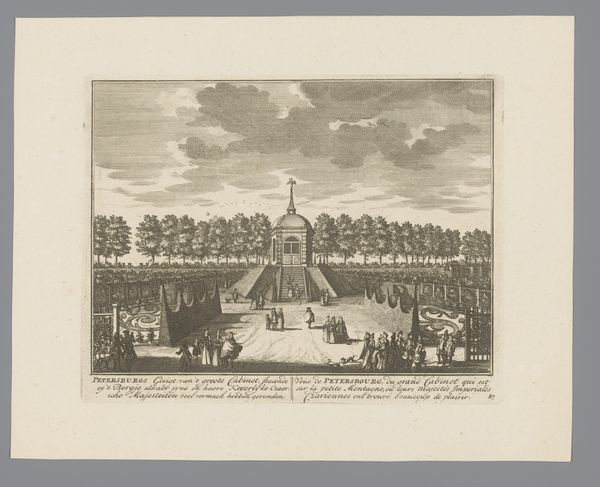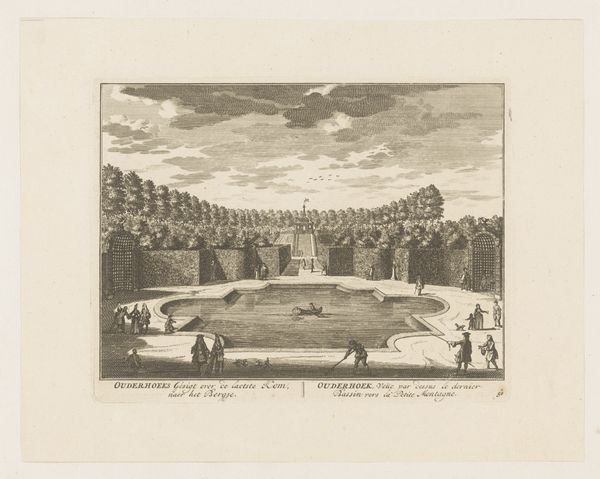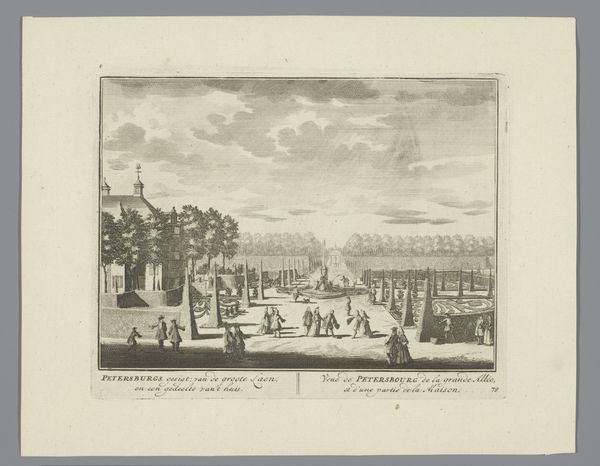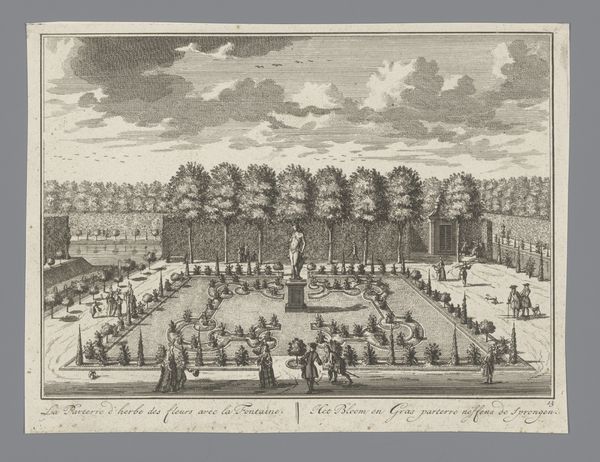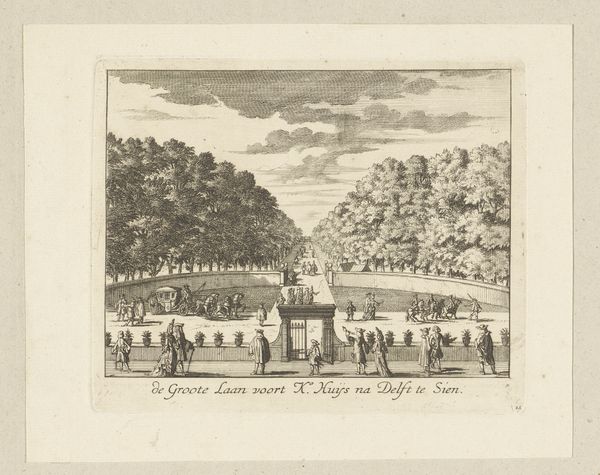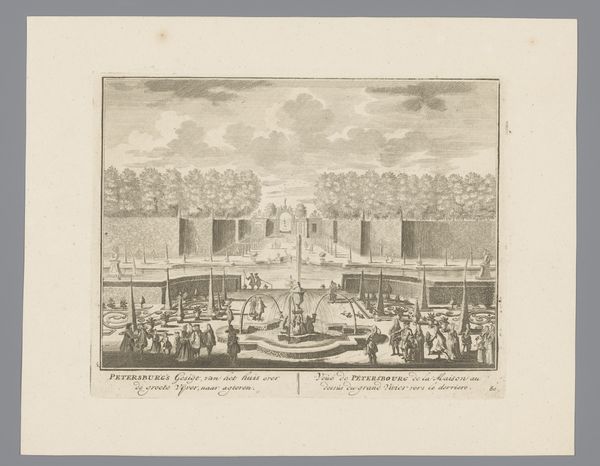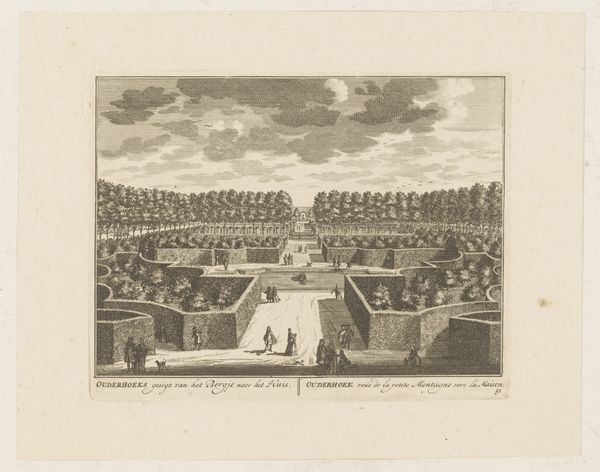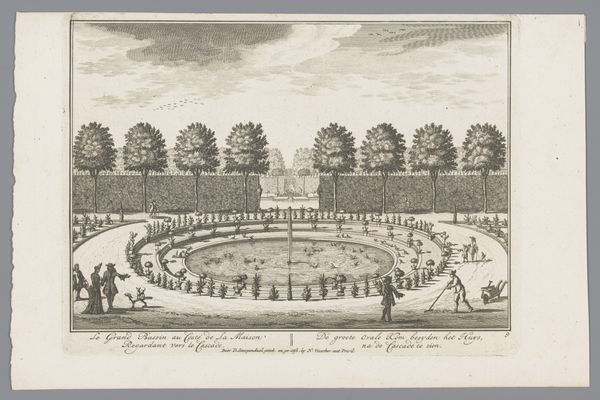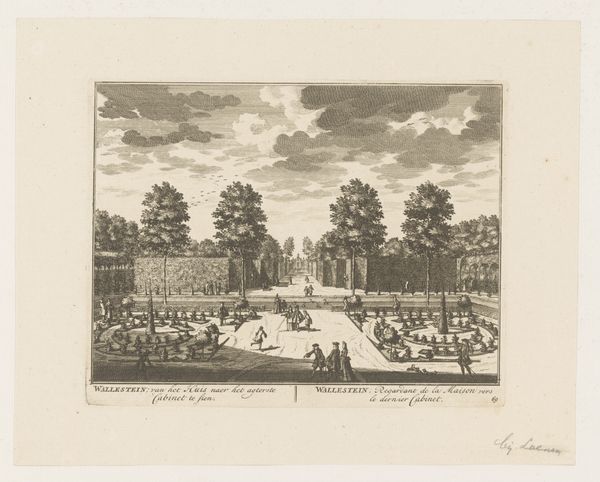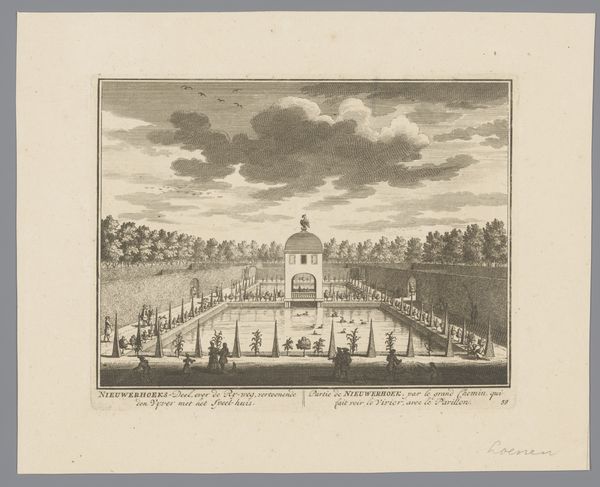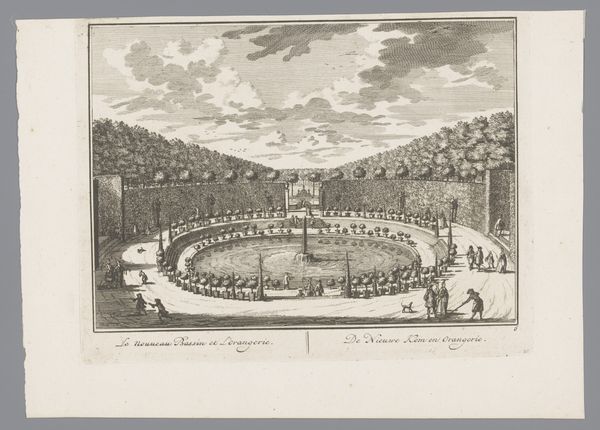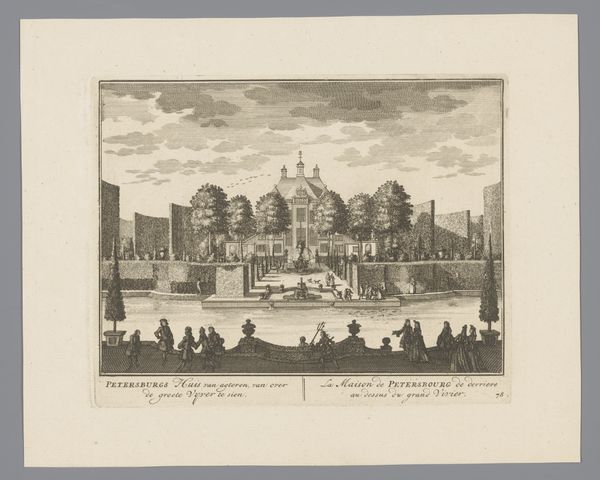
print, engraving
#
baroque
# print
#
landscape
#
engraving
Dimensions: height 159 mm, width 202 mm
Copyright: Rijks Museum: Open Domain
Curator: Immediately striking, wouldn’t you say? The strict geometric organization and subdued grayscale palette establish a contemplative mood. Editor: Indeed. What exactly are we viewing? Curator: This is Daniël Stopendaal’s engraving from 1719, entitled "View of the garden with cabinets of house Petersburg", held here at the Rijksmuseum. The print depicts a formal garden. Beyond the elegant figures, the image captures a crucial moment in Russia's Westernizing reforms, showing Peter the Great literally landscaping a new world order through projects demanding intense labor. Editor: The precise lines achieved through the engraving process lend themselves well to portraying this planned landscape, all perfectly symmetrical and orderly. It really emphasizes that concept of control and imposition of design onto nature. It reminds me a bit of structuralist thought and binary opposition of man versus nature, or culture versus nature. Curator: Precisely! These "cabinets" were architectural extensions, not mere decorations. They offered controlled environments, extensions of domestic power that reflect wealth and ambition. Consider the production involved— the engraver relying on printmakers and their skilled labor to disseminate this vision of imperial power. Editor: True. You can almost imagine the laborious process of creating this scene. Still, focusing on composition, Stopendaal’s decision to present the space as a flattened stage with figures evenly distributed enhances the sense of designed artificiality, doesn’t it? Curator: Yes. Think, also, of the materials circulated: the paper, the ink, the press, the economic exchange—this wasn’t simply an aesthetic object but a node in a network of trade and power projecting soft power. Editor: Considering the meticulous technique and the striking visual design, it’s easy to appreciate the aesthetic achievement of Stopendaal. Curator: Absolutely. And with Stopendaal’s work, we begin to understand the scale of ambitions during this transformational period, appreciating how these visions reshaped environments, labor, and the material world itself.
Comments
No comments
Be the first to comment and join the conversation on the ultimate creative platform.
